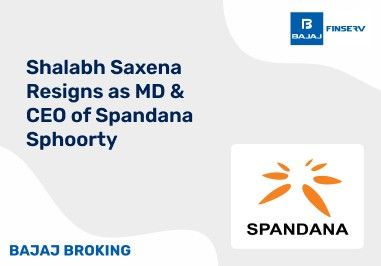BAJAJ BROKING
Tankup Engineers IPO is Open!
Open a Free Demat Account
Trade Now, Pay Later with up to 4x
Track Market Movers Instantly
Bull vs Bear Market - What Are The Differences
Synopsis:
Bull markets and bear markets are amongst the most prominent terms used in the stock market. In this article, we shall delve into the meaning and key characteristics of both types of markets and understand bull vs bear markets.
If there is one universal symbol associated with a stock market, it is a bull and a bear locked in a tussle. Prominent stock exchanges across the globe are marked by iconic sculptures of a bull and bear in their premises. The terms bull and bear (or bullish and bearish) find widespread application in conversations about stock trading and represent the state prevailing in the market at any point in time. In this article, we shall explore
- What is a Bull market
- What is a Bear market
- Bull vs Bear market
- Investment approaches in a bull market and a bear market
What is a Bull Market?
A bull market is a market that is on the surge. Just as a bull is renowned for its aggressive approach to situations, a bull market is characterised by the steady rise in the prices of securities, particularly over an extended period of time. Bull markets are driven by several factors including positive investor sentiment and increasing demand for market-linked securities, a generally robust outlook in the economy, and at times, favourable global events. In a bull market, the demand and price for securities follow a consistent upward trajectory, each driving the other.
What is a Bear Market?
In stark contrast to a bull market, a bear market refers to a market scenario where the prices of securities are on a downward spiral. A market is usually said to be bearish when it has declined more than 20% from its most recent levels. The consistent fall in the prices of securities is accompanied with a drastic decline in demand and a pessimistic outlook for investors, each perpetuating the other. Bear markets are often a result of a slowdown in the economy or a major macroeconomic event, for instance, the recent global pandemic.
Bull vs Bear Market
There are several differences between a bull market and a bear market vis-a-vis investor sentiment, volume of trading, market outlook, etc. While a bull market is driven by an increase in the nation's Gross Domestic Product (GDP), consumer demand, employment levels, and positive market events, a bear market is a result of declining economic activity and output, falling employment levels, decreasing consumer demand, and negative market sentiment.
The following table sheds light on the key differences between a bull market and a bear market.
Parameter | Bull Market | Bear Market |
Meaning | A bull market is a market that is going upwards. | A bear market is a market that is on a downward spree. |
Movement of security prices | In a bull market, the prices of securities tend to rise for a sustained period of time, ranging from a few months to several years. | In a bear market, the prices of securities tend to fall for a considerable time period, sometimes a few years. |
Investor sentiment | A bull market is characterised by optimistic and, often, aggressive (or bullish) investor sentiment. | A bear market is marked by pessimistic investor sentiment. |
Key causes | There are several factors that can lead to a bull market, including a rise in the country's GDP, high employment levels, and substantial consumer demand. | The major factors resulting in a bear market include a fall in the country's GDP, a decline in employment levels, and low consumer demand. |
Volume of trading | Bull markets are usually marked by high investor activity and substantial trading volumes. | Bear markets are usually marked by low investor activity and a corresponding low level of trading volumes. |
Launch of IPOs | A bull market is an ideal launch pad for an Initial Public Offering. | A bear market is not considered ideal for IPOs. |
How to Respond in Bull and Bear Market Scenarios
Since bull markets entail a consistent rise in the price of and demand for securities, they are characterised by high buying volumes. Buying securities in the early stages of a bull market and selling them when the prices hit their peak can be a way of benefitting from a bullish market scenario. Bull market situations are also considered ideal for selling long held stocks at high prices (should the investor wish to profit from the price movements).
In a bear market, the prudent approach is to wait for a security's price to reach its lowest, and then purchase it. Alternatively, there are strategies such as short selling and buying put options. Since there is no way to predict when the market will surge again, it is pivotal to be extremely cautious in your approach.
To sum it up
Having discussed the meaning and key features of bull and bear markets as well as bull vs bear market, we hope you have a deeper understanding of both types of market scenarios. It is important to make well-thought investment decisions in either market scenario so as to limit your risk exposure.
Disclaimer: Investments in the securities market are subject to market risk, read all related documents carefully before investing.
This content is for educational purposes only. Securities quoted are exemplary and not recommendatory.
For All Disclaimers Click Here: https://bit.ly/3Tcsfuc
Share this article:
Read More Blogs
Disclaimer :
The information on this website is provided on "AS IS" basis. Bajaj Broking (BFSL) does not warrant the accuracy of the information given herein, either expressly or impliedly, for any particular purpose and expressly disclaims any warranties of merchantability or suitability for any particular purpose. While BFSL strives to ensure accuracy, it does not guarantee the completeness, reliability, or timeliness of the information. Users are advised to independently verify details and stay updated with any changes.
The information provided on this website is for general informational purposes only and is subject to change without prior notice. BFSL shall not be responsible for any consequences arising from reliance on the information provided herein and shall not be held responsible for all or any actions that may subsequently result in any loss, damage and or liability. Interest rates, fees, and charges etc., are revised from time to time, for the latest details please refer to our Pricing page.
Neither the information, nor any opinion contained in this website constitutes a solicitation or offer by BFSL or its affiliates to buy or sell any securities, futures, options or other financial instruments or provide any investment advice or service.
BFSL is acting as distributor for non-broking products/ services such as IPO, Mutual Fund, Insurance, PMS, and NPS. These are not Exchange Traded Products. For more details on risk factors, terms and conditions please read the sales brochure carefully before investing.
Investments in the securities market are subject to market risk, read all related documents carefully before investing. This content is for educational purposes only. Securities quoted are exemplary and not recommendatory.
For more disclaimer, check here : https://www.bajajbroking.in/disclaimer
Our Secure Trading Platforms
Level up your stock market experience: Download the Bajaj Broking App for effortless investing and trading













